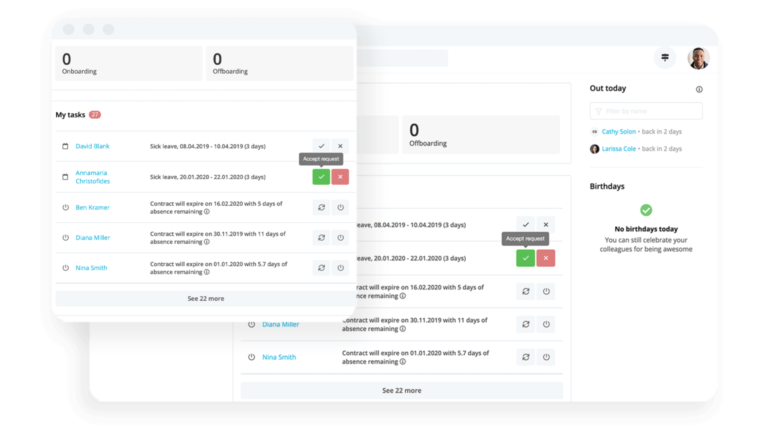Working From Home Tax Relief: What Employees & Employers Should Know
When it comes to working from home, the past couple of years have been littered with changes. If it feels like it’s hard to keep up, you’re certainly not alone. One of the biggest changes has to do with working from home tax relief in the UK.
In this article, we explain how it works in practice, who can claim it and how organisations should seek to educate their workforce. Let’s get started…
Book a demo to see why 15,000 companies trust Personio with their HR work.
What is Working From Home Tax Relief?
Since the COVID-19 pandemic, millions of workers around the world have started (and continued) working from home. As much as it saved money on things like petrol and public transit, it brought additional costs in the form of gas bills, electricity and internet.
To alleviate some of the costs for employees working from home, the HMRC started allowing people to claim additional tax reliefs. Introduced back in 2003, it only recently made its way back into the spotlight.
As part of this tax relief package, anyone working from home can claim back a part of their taxes based on increased bills in their homes. The sum was initially £4 a week, but the pandemic raised that allowance to £6 a week.
Recent Development: Given that workers are returning to the office, things have changed. For the tax year 2022-2023, the HMRC has updated some of its guidelines which makes it harder to get this tax relief.
How Does the WFH Tax Relief System Work?
In practice, let’s talk about how the working from home tax relief system works. The first thing is to understand who can claim this form of tax relief and who cannot.
Essentially, you can’t claim the tax relief if you:
Can work in the office, but choose to work from home
Choose to stay at home and work because of COVID-19
The office you’re supposed to work in doesn’t allow for all the staff to come there and work uninterrupted (undersized office)
You can claim the tax relief if you meet the following criteria:
When the job requires that the employee lives far away from the office and when it would be deemed unreasonable for the individual to commute
If an employer doesn’t provide office space to its employees
Given the recent updates from the HMRC for the tax year 2022-2023, there are revised guidelines that now apply to previous tax years….
Concerning 2020-2021 and 2021-2022 tax years, employees can still claim tax relief for those years. That’s because, during the pandemic, many employees were mandated to work from home – and bear the burden of increased expenses at home during those years.
For the tax year 2022-2023, if employees chose to work from home, they will not be eligible for tax relief (unless they meet the aforementioned criteria). Additionally, if a person is self-employed they cannot claim working from home tax relief.
Simplify your payroll tasks

Prepare your payroll more efficiently for accounts. Enable employees to change personal data themselves that HR approves. Working hours and bonus details are automatically transferred to your payroll system.
Streamline How You Pay EmployeesWhat Can Be Claimed as Part of Working From Home Tax Relief?
When it comes to tax relief for working from home, an employee can either have their employer pay them for the additional costs on their wages (tax-free). Or, the employee can claim their tax relief from HMRC. In this case, the employees have to choose.
Things that can be claimed include:
Business phone calls
Electricity bills
Gas bills
But, most importantly, you can only claim for things that only have a business usage. Now, let’s talk about concrete numbers…
How much money an employee will get depends on the income tax they pay. There are essentially three distinct tiers:
Basic rate. Employees in this bracket will get £1.20 a week. They receive this because the tax relief on £6 is 20% for their bracket. That means they get £62.40/year.
High rate. Employees in this bracket will get £2.40 a week. They receive this because the tax relief on £6 is 40% on their bracket. That means they get £124.80/year.
Top rate. Employees in this bracket will get £2.70 a week. They receive this because the tax relief on £6 is 45% on their bracket. That means they get £140.40/year.
Employees can claim previous years as well (up to five years for HMRC). So, for the tax year 2020-2021, you can apply for this claim up until 2025.
What Do Employers Need To Know About WFH Tax Relief?
Employers should be keenly aware of the HMRC’s guidelines when it comes to working from home tax relief. Not every employee will be eligible for the tax relief and they will have to check if they can claim it.
Employers will have to track if the employees received their tax claims from HMRC. This is so that employers can avoid paying for the additional costs that employees have accrued while working from home.
As part of the enablement and education process, you may even want to consider giving your employees access to this government tool found on this link that will help them see if they’re eligible for tax relief.
The World of Work Is Constantly Changing
While working from home skyrocketed during the pandemic, the new era of work is ushering in hybrid work policies, returns to the office and more challenges for already-busy HR teams.
Speak with an HR expert today to see how Personio’s all-in-one HR software solution can help upgrade your people operations – so you can focus on what lies ahead.

